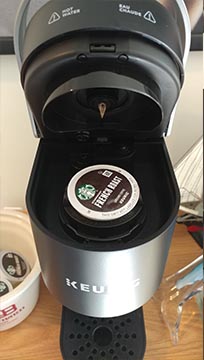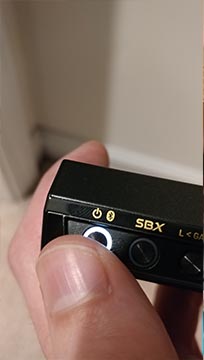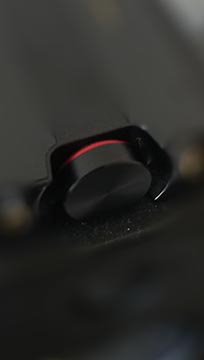The product I love:
This is a Christmas gift from my boyfriend’s company. It is a recreation of the “loot box” from Overwatch game. Loot boxes are often given to the user when they played, as rewards to level up. I am not a gamer, but when comparing the object to the game, it is very close in term of design. The material is plastic, with very nice color combinations and does not look cheap. I think for game fans, this is definitely something fun to relate to.
When he first introduced the gift for me, I looked at the box and thought: “It was a well-made toy. But that’s about it?” Initially, when looking at the product, from a design standpoint, it’s purpose was not clearly visible. I was unsure of its intended use and function. However, the way it was put together made me want to explore it further. It also made me want to know what was in the inside.
But then when we opened it, my perspective was different. It was very clear that the intended use was easily visible and discovered its use was of a mini picnic set. There are 4 pairs of coaster and glasses, which all contain details and illustrations from the game. When we removed all of these items from the box, we discovered that it could also be used as an ice box.
There are so many times I bought some functional object mostly for the look of it. I think this is a great design from both visual and functional standpoint. The object brings fun and entertainment to the user. It also gives us a surprise of affordance (we don’t know what it really is until we open it), but easy mapping (We can figure the coasters are there to be used with the glasses).
The product I love/hate:
Why do I have a love/hate relationship with this machine?
This machine saved me during the hot summer, but it also ruins the look of where ever I had to put it. This is a portable air conditioner so it convenient for me to move it to the location where I needed to use it.
While it provided me with cooling relief during the summer, the cost-benefit of the product was relatively high. This is due to the fact that this machine has only one main purpose which is providing cold air. However, this does not provide any benefit whatsoever for the cold winter months. So, therefore, I would need to purchase another product to keep me warm during this period.
While it provided benefits during summer, one of its major constraints is due to its physical size. When fully set up, the machine almost took ¼ of the available space. The product came with two big tubes, that needs to be connected to the outside of the window. To properly install these tubes, you have to open part of your window and attach them to a panel so the air can be circulated. When looking at the overall design, we can see it doesn’t provide good feedback. We don’t know if the two air tubes will fit in different windows if we have to move the machine to another location.
To use the air conditioner, I have to locate it in an open space, otherwise, it will block all the ways. It came with two big tubes, that will have to be linked to outside of the window. To install these tubes, you will have to open part of your window and insert it in. For me, it has so many physical constraints. When we look at the design, we can see it gives bad feedback. We don’t know if the two air tubes will fit in different window if we move the machine.







































































































































